1. Black Walnut
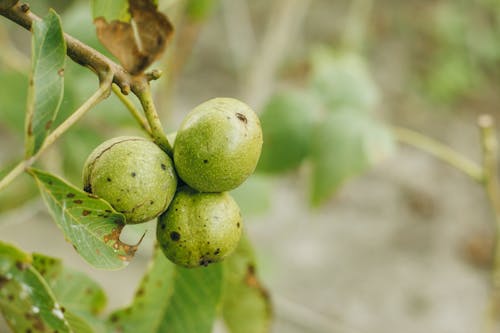
Black Walnut trees are majestic and provide great shade, but their roots release juglone, a chemical toxic to many common garden plants. Tomatoes, peppers, and apples are especially sensitive, and even some ornamentals will struggle under its canopy. The soil around a mature walnut can become inhospitable for years.
Juglone isn’t always obvious; plants may just seem “sickly” or slow-growing. This makes it a stealthy soil killer, rather than a sudden plant destroyer. If you have a walnut on your property, plan companion planting carefully or grow tolerant species nearby. Understanding juglone is key to avoiding frustration in your garden.
2. English Ivy
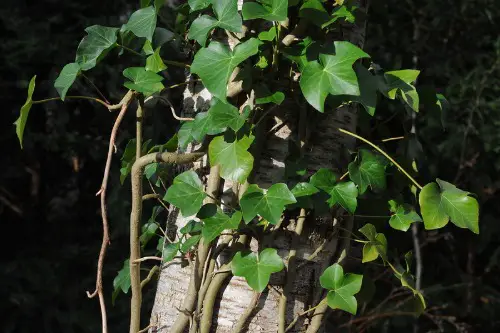
English Ivy is a classic favorite for walls and ground cover, but it comes with a hidden cost. Its thick mat of leaves can choke out other plants, monopolizing nutrients and sunlight in the soil beneath. Over time, the soil becomes compacted and less hospitable for anything else trying to grow. Gardeners often admire its lush green look without realizing the ecological toll.
This plant also exudes chemicals through its roots that inhibit the growth of neighboring plants. This process, known as allelopathy, means it’s not just physically crowding other plants—it’s chemically pushing them away too. If you love ivy, it’s best confined to containers or areas where it won’t touch your other garden beds. Otherwise, it quietly weakens your soil while you admire its evergreen charm.
3. Eucalyptus

Eucalyptus trees are famous for their fragrant leaves and fast growth, but they aren’t friendly to surrounding soil. Their leaves are full of allelopathic oils that leach into the ground when they fall. This creates a chemical barrier that suppresses seed germination and slows down the growth of other plants. Even hardy plants often struggle to take root nearby.
Additionally, the thick layer of fallen leaves can smother smaller plants and prevent water from reaching the soil. The combination of chemical inhibition and physical coverage makes eucalyptus a double-threat. They look exotic and attractive, but their soil impact can be devastating if left unmanaged. Careful pruning and leaf removal help, but the threat is always there.
4. Juniper
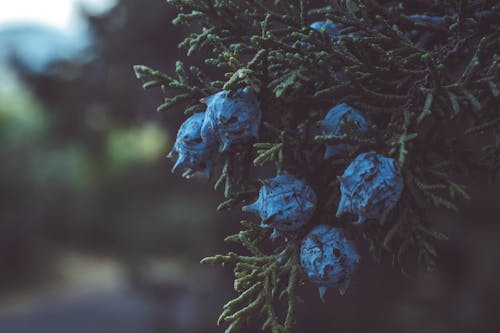
Junipers are beloved for their low-maintenance appeal and year-round greenery. However, their dense needles acidify the soil over time, making it less hospitable to a wide range of plants. Many perennials and vegetables struggle in the increasingly acidic environment beneath them. The soil slowly loses balance, favoring only a few tolerant species.
Their shallow roots also compete aggressively for water and nutrients. This means anything planted nearby may appear to be “starving” without an obvious reason. Gardeners need to consider both soil chemistry and root competition when planting near junipers. Otherwise, these silent soil dominators can make a flower bed look lifeless over the years.
5. Pine Trees
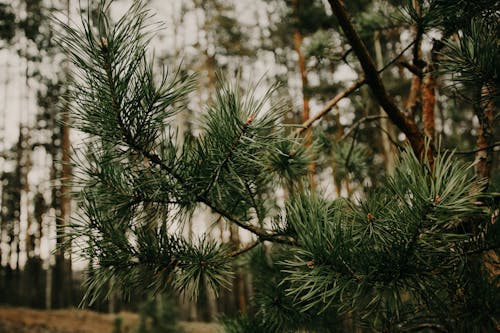
Pine trees are undeniably picturesque, especially with their long, sweeping needles and tall stature. But pine needles drop a constant layer of acidic debris, gradually lowering soil pH. Many plants simply cannot tolerate this level of acidity, which reduces biodiversity in your garden. Over time, the soil becomes optimized only for acid-loving plants like blueberries or rhododendrons.
The thick pine litter also prevents rainwater from penetrating deeply, leading to drier soil conditions beneath the canopy. Compacted and acidic, this soil slowly loses its natural fertility. Even a few pines in the wrong spot can quietly transform the soil into a hostile environment. It’s a subtle, slow-working process that’s easy to overlook.
6. Bamboo

Bamboo is the poster child for fast-growing greenery, but it comes at a steep cost to soil health. Its roots spread aggressively and monopolize nutrients, often leaving little for other plants. The soil under dense bamboo can become almost barren, as it constantly draws minerals and water for itself. Gardeners love the height and privacy bamboo provides, but the soil silently suffers.
Some species also release allelopathic chemicals, suppressing the germination of nearby seeds. Removing bamboo is notoriously difficult because of its extensive root system. If unchecked, it can completely dominate a garden bed, leaving the soil depleted. Bamboo may be beautiful, but it’s a slow-working soil thief.
7. Mint
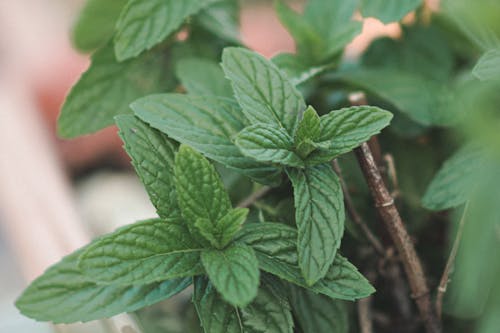
Mint is aromatic and lively in flavor, but it’s also a notorious soil hog. It spreads quickly through underground runners, often taking over the entire garden bed. The aggressive roots compete for nutrients and water, making it difficult for other plants to thrive. Many gardeners underestimate how quickly mint can dominate a space.
Its invasive nature can change the soil ecosystem over time. Areas dominated by mint tend to favor its own growth and suppress other plants, subtly altering soil biodiversity. Using containers or barriers can help, but without them, mint quietly controls the garden. It’s a small herb with a big impact underground.
8. Sorghum
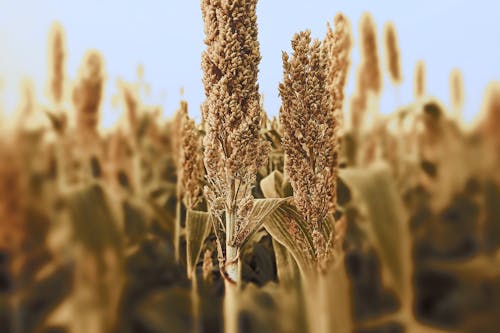
Sorghum is not just a crop; some varieties are grown ornamentally, admired for their striking leaves. But sorghum roots release toxic chemicals into the soil, known as sorgoleone. These chemicals inhibit neighboring plant growth, making the soil less fertile for other species. You may notice small plants struggling nearby without realizing why.
The allelopathic effect isn’t limited to sorghum’s growing season—it can linger in the soil for months. This can reduce overall plant diversity and slow the recovery of soil health. While sorghum looks dramatic and beautiful, it quietly discourages other plants from sharing the same space. Awareness is crucial for gardeners hoping for mixed plantings.
9. Comfrey

Comfrey is a powerhouse plant for green manure and herbal uses, but it can be a little greedy with nutrients. Its roots are deep and robust, extracting minerals efficiently and leaving less for other plants nearby. Over time, soil in heavily planted comfrey areas may see reduced fertility for shallow-rooted species. Gardeners often grow it for its leaves without realizing its soil impact.
Comfrey can also release substances that suppress seed germination in surrounding plants. This subtle allelopathic effect means seedlings often fail near mature comfrey plants. While excellent for compost and mulch, it isn’t always the best neighbor in a mixed garden. Its benefits come with some silent costs.
10. Sunflower
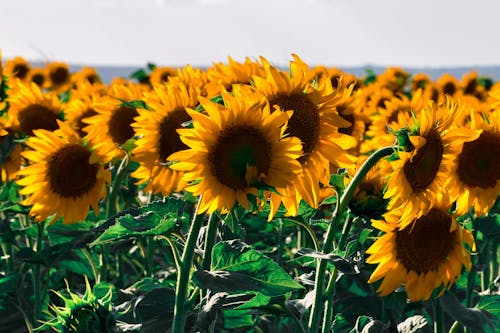
Sunflowers are cheerful and bold, but their soil impact is not always positive. They have strong, deep roots that pull up nutrients from lower layers, which may leave surface plants slightly starved. Additionally, sunflower residues can inhibit the germination of some small seeds. A sunflower patch might look beautiful but can subtly shift soil chemistry and nutrient balance.
After harvest or blooming, the decomposing plant material can temporarily affect the soil’s microbial composition. This can slow down nutrient recycling and affect neighboring plants. Sunflowers are a visual treat, but planting them strategically is important to protect soil health. They are more than just tall, happy faces—they have serious underground influence.
11. Marigolds
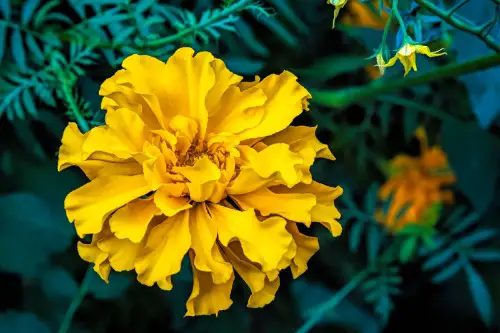
Marigolds are beloved for their bright colors and pest-repelling properties, but they can have a surprising effect on soil. Their roots produce compounds that are mildly allelopathic, which can inhibit the germination of some seeds. While this helps control weeds, it can also prevent desirable plants from thriving in the same bed. Over time, the soil under heavy marigold planting may show reduced plant diversity.
Some gardeners plant marigolds in vegetable beds without realizing the chemical interference. Certain crops, like beans or lettuce, might struggle when marigolds dominate the area. While small and pretty, marigolds quietly shift the soil ecosystem. Using them strategically is the key to balancing beauty and soil health.
12. Red Maple
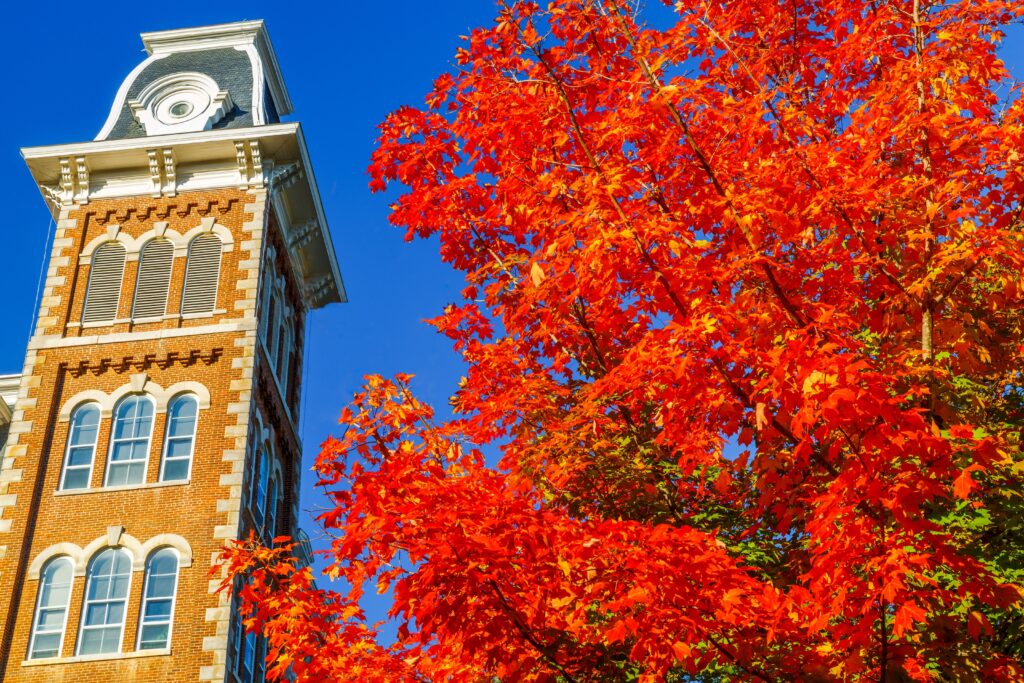
Red Maples are striking in fall, but their leaves are highly acidic. As they decompose, they acidify the soil, which can be a problem for non-acid-loving plants. This gradual acidification changes nutrient availability, making the soil less suitable for many garden plants. Beneath a mature red maple, you may notice struggling perennials and vegetables.
Additionally, their extensive root systems compete aggressively for water. The combination of chemical changes and root competition slowly undermines soil fertility. Red maples are gorgeous, but their charm comes with a hidden underground cost. Garden planning around them is essential for healthy soil.
13. Black Locust
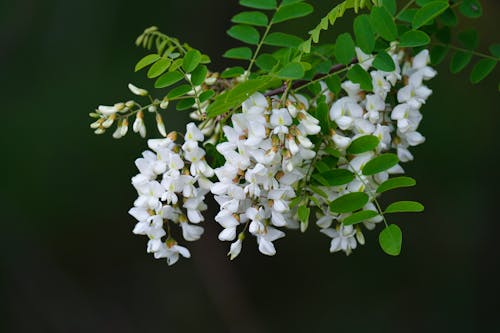
Black Locust trees grow quickly and produce fragrant flowers, but their roots release allelopathic chemicals. These substances can suppress the growth of many nearby plants, leaving soil less hospitable. They are nitrogen-fixers, which might sound good, but the chemical suppression outweighs the benefit for most neighbors. Seedlings and delicate perennials often fail to thrive nearby.
Their fast growth and dense root system also compete for water and minerals. This creates a zone where few plants can establish successfully. While admired for flowers and shade, Black Locust quietly dominates both soil and garden space. Without careful planning, soil health under these trees can deteriorate.
14. Oregano

Oregano is a garden favorite for flavor and fragrance, but it spreads aggressively. Its roots and dense foliage can dominate small beds, outcompeting other herbs and flowers. This leads to soil that’s effectively optimized for oregano alone. The subtle nutrient imbalance and root competition quietly impact soil biodiversity.
Oregano’s allelopathic tendencies can prevent seedlings of less aggressive plants from establishing. Over time, a patch of oregano may monopolize both soil nutrients and space. While it’s wonderful in cooking and companion planting in moderation, left unchecked it can quietly degrade the garden soil. Like a stealthy herbivore, it takes more than it gives.
15. Ryegrass

Ryegrass is often admired for its lush, uniform growth and usefulness as a fast cover crop. Yet its vigorous roots consume water and nutrients quickly, leaving surrounding plants hungry. Over time, this aggressive feeding drains soil fertility, requiring amendments to restore balance. Gardeners may enjoy the quick greenery but miss the slow soil exhaustion happening beneath.
Ryegrass also releases natural compounds that hinder seed germination in its vicinity. This makes it an efficient ground dominator but a poor neighbor for plant diversity. Soil under ryegrass can become biologically narrower, favoring only itself. While it looks like a problem-solver, it quietly creates a long-term issue for your soil.
16. Oleander

Oleander is admired for its beautiful flowers and evergreen leaves, but it hides a destructive secret. Its root system exudes allelopathic chemicals, which suppress the growth of many plants around it. Over time, the soil surrounding oleander can become barren, with few species able to thrive. What seems like a lush, ornamental shrub is actually a soil manipulator.
The thick leaf litter oleander produces also contributes to soil imbalance. As the debris breaks down, it alters microbial activity, further limiting diversity. Even though oleander provides visual appeal, it steadily makes the soil less welcoming. Its beauty masks its quiet role as a soil killer.
17. Privet
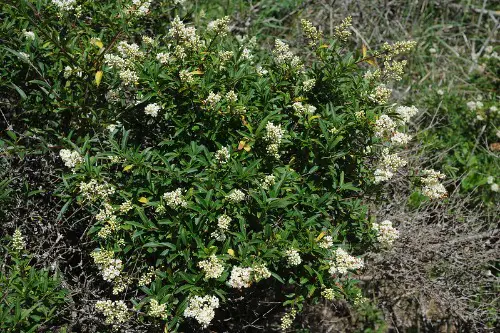
Privet hedges are popular for their dense greenery and neat appearance, but they come at a hidden cost. Their roots spread widely, pulling in large amounts of water and nutrients. This creates dry, nutrient-poor soil that becomes increasingly unfriendly to other plants. Many gardeners notice the barren strip beneath their hedges without knowing why.
Privet also releases compounds that can discourage nearby seedlings from sprouting. This subtle allelopathic effect ensures privet maintains its dominance. The soil it leaves behind is depleted, dry, and unwelcoming to diversity. What starts as a tidy hedge can end up a soil-draining wall.
18. Crepe Myrtle

Crepe Myrtle trees are celebrated for their colorful blooms and smooth bark. However, their fallen flowers and leaves change the balance of soil nutrients over time. This constant litter can create imbalances that make soil less fertile for other plants. Beneath their canopy, gardeners may notice fewer healthy perennials taking hold.
Their shallow roots are also highly competitive, monopolizing nearby water. This makes the surrounding soil dry and challenging for less aggressive plants. While beautiful in summer, crepe myrtles are quietly harsh on soil ecosystems. They are a subtle drain on garden diversity and soil richness.
19. Ragweed

Ragweed is infamous for triggering allergies, but it also works against soil health. Its roots exude chemicals that inhibit neighboring plants, leaving soil less diverse. In large patches, it quickly dominates, reducing the resilience of the soil ecosystem. What looks like an ordinary weed is actually a soil-level disruptor.
As ragweed grows, it also takes in heavy amounts of nitrogen, changing soil nutrient balance. This shift makes the soil less suitable for a variety of garden species. Over time, the patch it dominates becomes depleted and difficult to restore. Ragweed quietly erodes soil quality while spreading aggressively.
20. Alder

Alder trees are admired for their ability to fix nitrogen, but this benefit can become a burden. Their roots release nitrogen in such excess that it disrupts soil balance. Other plants sensitive to high nitrogen struggle, leaving the soil suited only for fast-growing weeds. What begins as enrichment often ends as imbalance.
The heavy litter from alder trees compounds the problem by smothering small plants. As the leaves decay, they alter soil acidity and microbial life. Over time, soil beneath alder loses diversity and resilience. The tree’s quiet dominance makes it a poor partner for a balanced garden.
21. Artemisia

Artemisia is valued for its silvery leaves and resilience, but it has a darker side. Its roots and leaves produce strong allelopathic chemicals, which seep into the soil. These compounds can block germination and growth of other plants around it. In time, soil near artemisia becomes resistant to diversity.
The plant also thrives in poor soil, further monopolizing available nutrients. This creates an environment where other species cannot compete. While its ornamental qualities are undeniable, it exerts a quiet stranglehold on the soil. Planting artemisia without limits risks long-term soil depletion.
22. Morning Glory
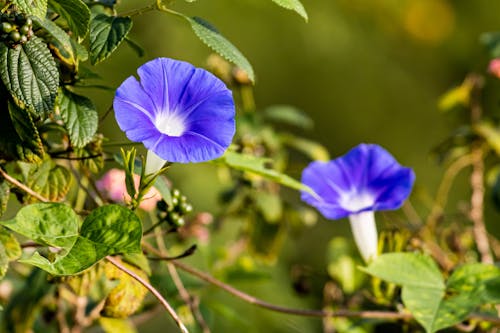
Morning Glories enchant with their climbing vines and cheerful blooms, but they are tough on soil. Their roots spread rapidly, consuming nutrients at a steady pace. Once established, they leave surrounding soil depleted, making it hard for other plants to thrive. Their beauty disguises a steady, unseen takeover.
The dense growth of vines also shades soil heavily, reducing microbial activity and water balance. Over time, this results in compacted, tired soil that favors only the vine itself. What looks like a dreamy garden feature can be a soil nightmare. Morning Glory’s charm comes at the expense of underground health.
This post 22 Common Plants That Are Beautiful but Quietly Kill Your Soil was first published on Greenhouse Black.
